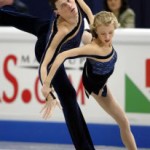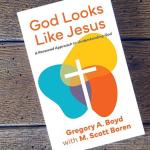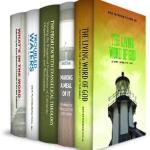In a piece that’s been passed around quite a bit, Damon Linker suggests that film critics in the mainstream media have, for whatever reason, largely ignored its religious outlook. Here’s the key assertion from Linker:
[T]he vast majority of mainstream critics have failed to treat [The Tree of Life and To the Wonder] as the profoundly religious — and specifically Christian — works of art that they are. Whether or not the silence is a product of the theological illiteracy and scriptural ignorance that typically prevails among overwhelmingly secular journalists, something essential about these remarkable films has been missed.
Granted, if you scan the synopses of the “top critics” page of Rotten Tomatoes, it looks bleak, but is Linker’s assertion true? I’d rather not make a sweeping judgment about Linker’s claim, mostly because I’m not sure how to take him on some of his own terms. Namely: I’m not sure who qualifies as “mainstream,” I’m not sure what for him constitutes a “vast majority,” and I’m equally unsure what for him qualifies as adequate “treatment” or “engagement” of those undeniable themes.
So instead of providing an unqualified “no” in answer to whether or not Linker’s assertion is accurate–which, on his terms, may be so–I’ll provide a sampling of the reputable critics that I’ve read who seem to me to have provided comment on To the Wonder as an explicitly religious film, and in some cases, with an overtly Christian trajectory. Or at the very, here are some critics who have at least provided suggestions, clues, and reference to that trajectory. You can then decide.
If nothing else, I hope that sharing the work below will forward the conversation in a more positive and productive direction.
“To the Wonder” is very much a story, even a simple story, and Malick’s first to be set in the contemporary world. Unlike “The Tree of Life,” it doesn’t feature scenes in Heaven, in prehistory, or the distant cosmos—yet it is no less a metaphysical extravaganza, which is all the more remarkable inasmuch it is a movie of life at hand. Malick’s art—and it is an art as original and distinctive as it is profound and heartfelt—is that of looking at situations and settings that are so classical as to risk banality and to restore to them a full, even overflowing, aspect of (yes) wonder, by means of the conception of the action and the way that he films them. Malick, judging from the evidence, knows a lot about love and its pain. As he brings his love story to the screen, he also brings out serious ideas about the trials of the artistic life, about the conflict between the Catholic heritage and the Protestant one, about the tense mutual influence of Europe and America—and, most amazingly, he does it with images and sounds, not with speeches and drama. Malick here turns the very act of cinematic vision, of filming, philosophical.
…
There is perhaps no film in the history of cinema that reveals such attention to light, which seems to suffuse the space of every frame and to imbue the characters with its moral and spiritual element. Malick treats light as something of the main substance of the film, even the main subject of the film, as well as its crucial (and deeply conceived) metaphor. Anyone who has been to the northern coast of France should have exulted in the quality of the light, and Malick—who establishes the movie’s thematic harmony early on with a crucial scene in which the man and the French woman visit Mont Saint-Michel—makes the contrast between French and American light, between the coast and the heartland, between the cathedral and the town, the fundamental tonality of the movie, a sort of cinematic music from which the action unfurls and to which Malick recurs, brilliantly and joltingly, with a sure and assertively audacious editing sense. The spire of the cathedral plays the role of a radio antenna of a singular, world-encompassing power, and the frequency it tunes to is one of light.
The most cinematically fruitful schism is the one between the Catholic Church and Protestant denominations. It gave rise to Carl Theodor Dreyer’s epochal blend of the highly inflected and the austerely natural in his 1928 “The Passion of Joan of Arc,” to Jean-Luc Godard’s combination of cinematic passion and suspicion, idolatry and iconoclasm—and, now, it’s the philosophical spark of Terrence Malick’s new film, “To the Wonder,” in which Catholic iconography and Protestant ideals tangle in the American heartland.
I wrote here last week about Malick’s rapturous sense of beauty, rooted in painting and dance, as well as of the rare depths of emotional experience he sounds by replacing character and psychology with archetype and mood. But the director’s intentions are far from the “oceanic” or vaguely spiritual; his metaphysical ideas aren’t cosmic but terrestrial and rich in human implications, and his vision isn’t one of the beyond but of life. “To the Wonder” brings a deeply considered and coherent worldview to the screen, and it’s worth considering the specific substance of Malick’s philosophical, religious, and aesthetic sensibility.
…
Malick’s camera is neither weighed down by dogma nor by abstemiousness, neither by renunciation nor by ritual. His fluid, agile, impressionistic, ecstatic, awe-filled and joyful, yet essentially modest and intimate images suggest a transcendentally-guided trip through the world—a wandering that’s tethered to the light, a light that, seemingly beamed from the cathedral, lends a virtual architectural form to the inchoate open spaces of the landscape, and that seemingly guides bodies through it, weightlessly, transforming ordinary strolling into a sort of—well, a sort of ballet.
The grays and blues of Mont Saint-Michel, the pinks and golds of the open fields of sun-drenched Oklahoma — these and other elements of Malick’s palette convey a world both blessed and fallen. For all the seeming meandering of “To the Wonder,” the movie finally, and with a suddenly remarkable sense of purpose, delivers the viewer to an intimation of grace that’s as powerful a thing as art has to offer, in the visual and aural form of a Christian prayer. Not that Malick’s aesthetic corresponds in any way to Joel Osteen’s.
As Kurylenko and Affleck drift away from each other, the latter into the arms of an old flame (Rachel McAdams), Malick cuts away to the tangentially related journey of disillusioned priest Javier Bardem, who has a harder time than his parishioners in communing with God. His vocation brings him into the homes of the poor and the wretched, and it shakes his faith—at least insofar as he ever had any. Bardem shares a scene or two with Affleck, but mainly just to establish them as occupying the same cinematic universe. He exists more as the roving conscience of the film, like the crumbling bridge between man and transcendence.
Bardem’s dilemma is the central one in To The Wonder, and Malick does his best to make it ours, too. The film can’t be judged by the usual metrics—it has figures rather than characters, movements rather than acts—because what it’s really attempting to do is give expression to the ineffable and show us something beautiful, reminding us that we live in a world that’s larger than ourselves, and crafted by that invisible hand. Pitt resists it in The Tree Of Life, Affleck resists it here, and mankind carves up the earth and violates it. (Affleck’s profession has him presiding over the slicing and dicing.) But there’s great poignancy in the effort to find that connection—Bardem has a devastating bit of narration toward the end that could double as a thesis statement for Malick’s career—and plenty of moments when the film is ecstatically beautiful.
Comparisons to his other work established, let’s now enumerate all of the things that Malick is doing in To the Wonder that struck me as unique in his oeuvre: a reckoning with the texture of contemporary American living from an outsider’s point of view; the easy incorporation of real people (i.e. nonactors from the towns of Bartlesville and Pawhuska, Oklahoma, where the film was shot) into the otherwise aestheticized whole, giving the film the occasional feel of being hybridized between fiction and documentary; a direct addressing of its characters’ specifically Christian faith rather than a vague outline of a nondenominational spirituality; a nonstop rush of images that transforms what is basically a simple character piece into a work of radical montage; and an almost complete disavowal of synced, spoken dialogue in favor of voice-over. His earlier films may have noticeably been leading towards this, yet none of them are quite as unconventional, as internalized and fragmented.
Make what you will of Malick’s recent evangelizing, but he is most definitely what we used to call in my church-going days a “Psalm 19 guy”–one who hears all of creation proclaiming the glory of the Creator. On a literal level, the voiceover ruminations on God in both The Tree of Life and To the Wonder strike me as doggerel (I try my best to ignore them) but the sound of the whispered lines—like the sound of Arseni Tarkosvky reciting poetry in Mirror—can be deeply human and holy.
As the film opened, I wondered if I was missing something. As it continued, I realized many films could miss a great deal. Although he uses established stars, Malick employs them in the sense that the French director Robert Bresson intended when he called actors “models.” Ben Affleck here isn’t the star of “Argo” but a man, often silent, intoxicated by love and then by loss. Bardem, as a priest far from home, made me realize as never before the loneliness of the unmarried clergy. Wandering in his empty church in the middle of the day, he is a forlorn figure, crying out in prayer and need to commune with his Jesus.
A more conventional film would have assigned a plot to these characters and made their motivations more clear. Malick, who is surely one of the most romantic and spiritual of filmmakers, appears almost naked here before his audience, a man not able to conceal the depth of his vision.
…
There will be many who find “To the Wonder” elusive and too effervescent. They’ll be dissatisfied by a film that would rather evoke than supply. I understand that, and I think Terrence Malick does, too. But here he has attempted to reach more deeply than that: to reach beneath the surface, and find the soul in need.
As prompts for the actors, Malick shared representative works of art and literature. For Affleck, he suggested Fitzgerald, Tolstoy, and Dostoevsky. (Affleck read Martin Heidegger on his own, having known that Malick had translated one of the German philosopher’s works as a grad student.) For Kurylenko, he also recommended Tolstoy and Dostoevsky — specifically, Anna Karenina, The Brothers Karamazov, and The Idiot. “Those books were, in a way, his script,” she says. But he did more than give the actors the books; he suggested ways to approach the texts and characters to focus on. So, for example, he recommended that Kurylenko read The Idiot with a particular eye on two characters: the young and prideful Aglaya Yepanchin, and the fallen, tragic Nastassya Filippovna. “He wanted me to combine their influences — the romantic and innocent side, with the insolent and daring side. ‘For some reason, you only ever see that combination in Russian characters,’ he said to me.”
Feel free to provide other examples in the comment feed and I may add to this list with time.
And, of course, in the not-so-“mainstream,” you can find plenty more interaction with the film’s Christian themes here, here, here, here, here, here, and here. And (wait for it…) you could also read my review!










